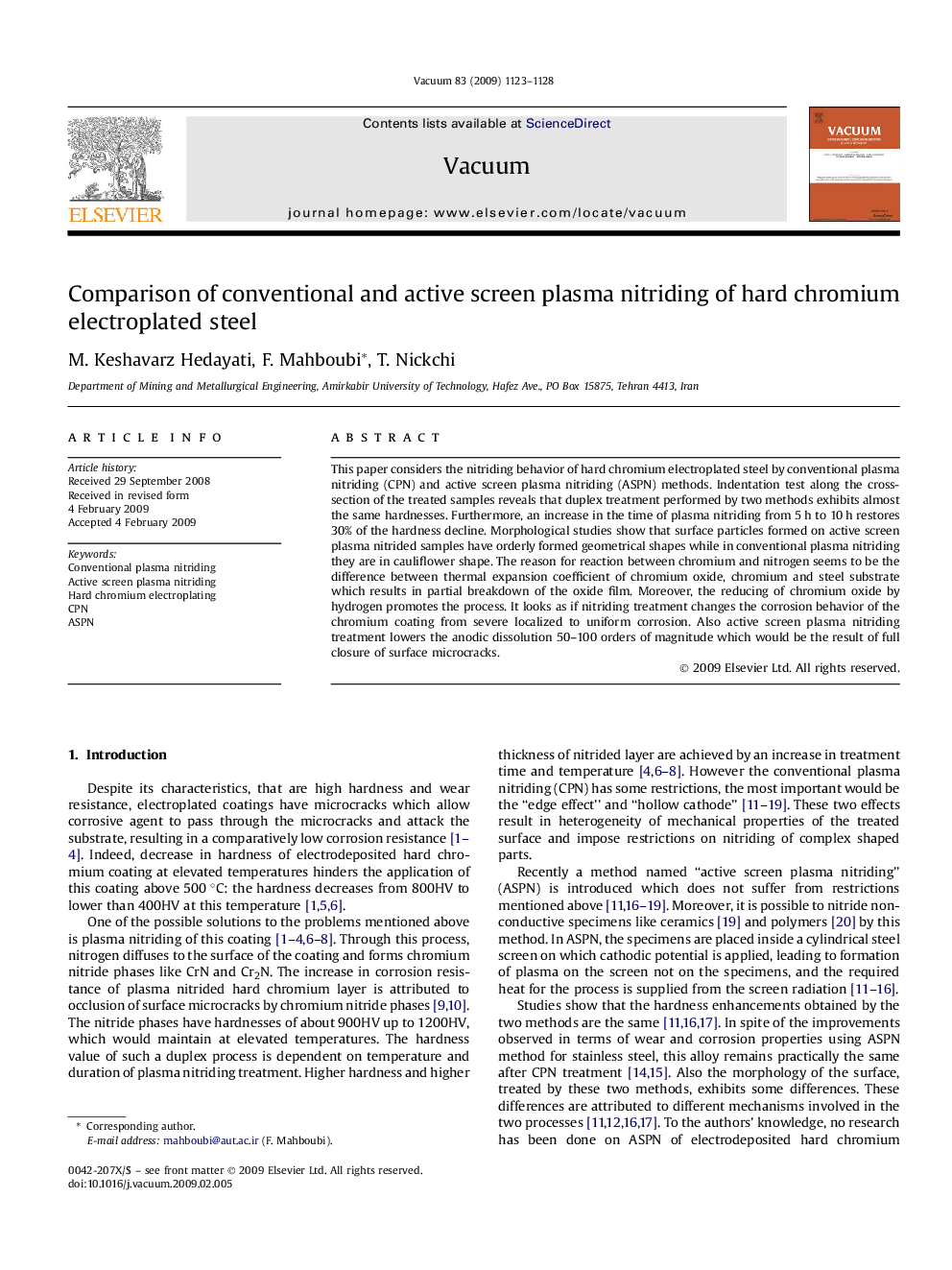| Article ID | Journal | Published Year | Pages | File Type |
|---|---|---|---|---|
| 1689721 | Vacuum | 2009 | 6 Pages |
This paper considers the nitriding behavior of hard chromium electroplated steel by conventional plasma nitriding (CPN) and active screen plasma nitriding (ASPN) methods. Indentation test along the cross-section of the treated samples reveals that duplex treatment performed by two methods exhibits almost the same hardnesses. Furthermore, an increase in the time of plasma nitriding from 5 h to 10 h restores 30% of the hardness decline. Morphological studies show that surface particles formed on active screen plasma nitrided samples have orderly formed geometrical shapes while in conventional plasma nitriding they are in cauliflower shape. The reason for reaction between chromium and nitrogen seems to be the difference between thermal expansion coefficient of chromium oxide, chromium and steel substrate which results in partial breakdown of the oxide film. Moreover, the reducing of chromium oxide by hydrogen promotes the process. It looks as if nitriding treatment changes the corrosion behavior of the chromium coating from severe localized to uniform corrosion. Also active screen plasma nitriding treatment lowers the anodic dissolution 50–100 orders of magnitude which would be the result of full closure of surface microcracks.
